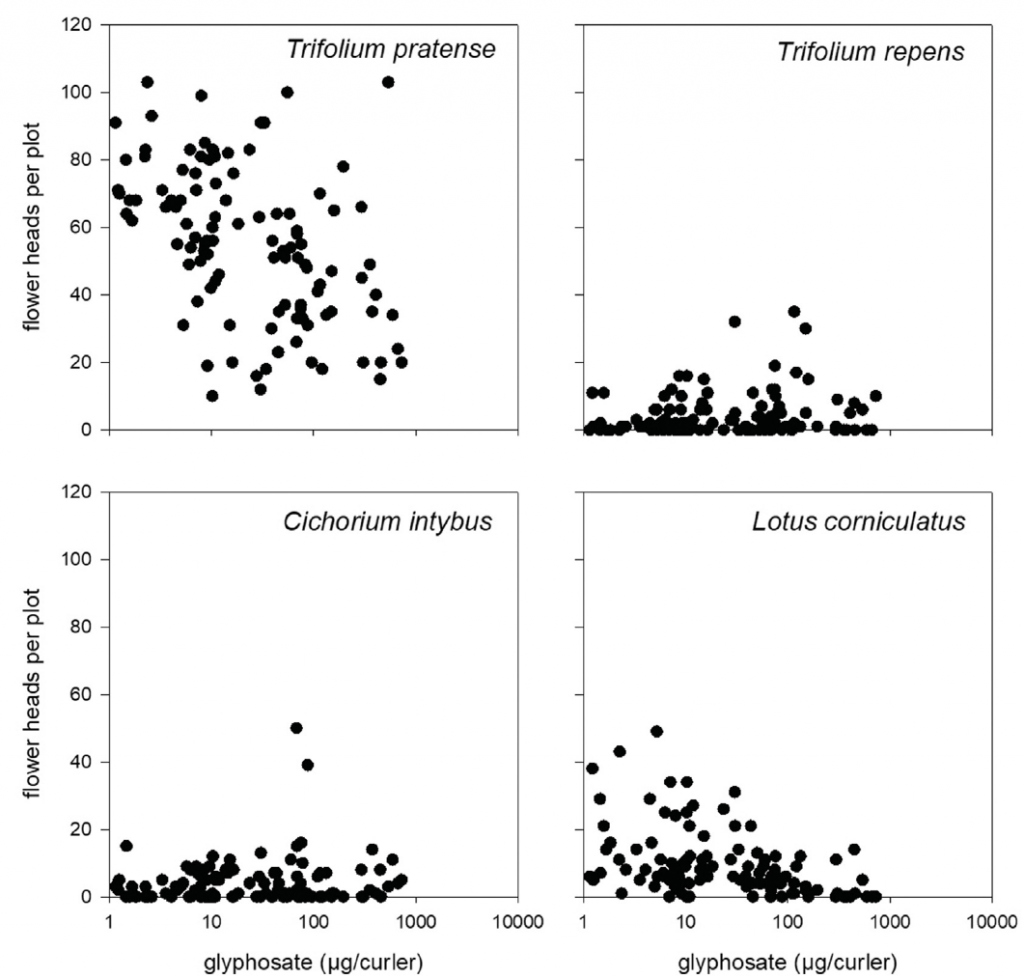In this blogpost, Moritz Link reports how spray drift deposition of the herbicide glyphosate on a mixture of perennial non-target terrestrial plants was simulated and measured. Plant cover and number of open, pollen-producing inflorescences were recorded before and after the exposure event to determine sub-lethal herbicide effects.
The flora of natural and semi-natural habitats adjacent to agricultural fields can be exposed to pesticides via spray drift during application. Pesticide-related effects (mostly for herbicides) such as reduced plant species richness and changes in biomass, abundance and mortality of non-target plants are well-known. However, sub-lethal doses of herbicides may also affect plant flowering. Application rates of up to 5% of recommended field rates have been associated with a reduced number of flowers per plant, as well as delayed and shortened flowering periods in herbaceous species. Spray drift deposition of 1-25% of field application rates in non-target areas adjacent to fields have been reported. Thus, herbicide spray drift may adversely affect flower diversity and availability of floral resources, which in turn may affect higher trophic levels such as flower visiting insects. Unfortunately, exact levels of herbicide exposure are rarely reported. Therefore, we analyzed glyphosate deposition from a realistic spray drift event under light wind and in distances up to 25 m from the field margin by using hair curlers as passive samplers. To capture effects of herbicide exposure in the non-target area, we recorded floral abundances and cover of four herbaceous plants. This is the first study, on effects of spray drift on herbal vegetation, where the vegetation was exposed to a real spray drift event with a single herbicide and where the spatially explicit deposition as well as plant responses have been measured.

We estimated a maximum deposition of 30 g glyphosate/ha (2.08% of the label rate) and an average deposition of 2.4 g glyphosate/ha (0.15% of the label rate). Our study shows that glyphosate concentration had a significantly negative effect on the cumulative number of flowers of two plant species (T. pratense and L. corniculatus). Both plant species were insect-pollinated, herbaceous plants common in field margins of Northern-Europe. They are also important nectar sources for many insects. Moreover, delayed flowering was indicated for all species except T. repens, though this effect was statistically non-significant. Furthermore, we found that the deposition of glyphosate greatly varies over similar distances from the spray boom.

This finding confirmed that using downwind distances as a proxy for concentrations of spray drift deposition – as done by several previous studies – is inaccurate. In our study, plant flowering is affected even at low glyphosate concentrations and the experiment included only a single application swath. However, spraying a field involves multiple swaths, which likely increase the deposition considerably. In intensively farmed agricultural landscapes, areas with natural vegetation adjacent to agricultural fields may potentially be exposed regularly to spray drift concentrations of herbicides. Potential consequences of sub-lethal herbicide doses from spray drift on non-target plants include reduced seed production, negative effects on plant reproductive fitness, altered species compositions as well as cascading negative effects for flower visiting insects.
The findings of our study challenge the conventional belief of existing buffer zones as being sufficiently wide in order to be protective for adjacent non-target areas, because flowering is affected at very low exposure levels and deposition varies greatly for the same distance to the spray boom.
The paper was authored by Beate Strandberg, Peter Borgen Sørensen, Marianne Bruus, Rossana Bossi, Yoko L. Dupont, Moritz Link, Christian Frølund Damgaard, and published in Environmental Pollution.
